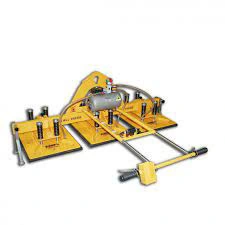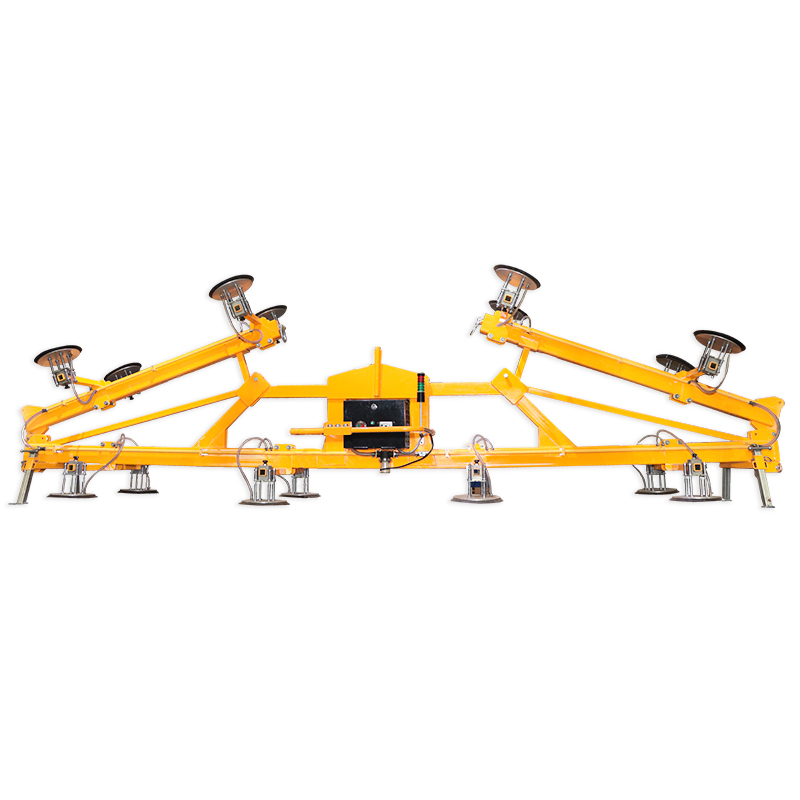In the dynamic world of material handling, selecting the right equipment is critical for both operational efficiency and workplace safety. Among the many tools available, vacuum lifters have become a go-to solution for lifting flat, non-porous materials. However, to unlock their full potential, businesses must first answer a key question: How can you determine the appropriate lifting capacity for a vacuum lifter?
This guide outlines the practical and technical steps to determine the correct capacity, backed by real-world experience, engineering expertise, global authoritativeness, and industry trustworthiness—aligned with E-E-A-T standards.

👉 What Is Material Handling?
👉 What Does Material Handling Mean?
Table of Contents
ToggleUnderstanding the Role of Lifting Capacity in Vacuum Lifters
Lifting capacity refers to the maximum weight a vacuum lifter can safely and effectively handle. This value is influenced by:
- Suction pad size and quantity
- Vacuum system pressure
- Material surface characteristics
- Load shape and center of gravity
- Mounting configuration (e.g., crane, gantry, forklift)
Selecting an under-capacity model may cause vacuum failure and dropped loads. Choosing one that’s oversized can result in higher costs and reduced maneuverability.
👉 What Is a Material Handling Equipment Vacuum Lifter?
👉 Vacuum Lifters
Step-by-Step Guide: How to Choose the Right Lifting Capacity
1. Identify the Material Type and Properties
Start by analyzing the material you’ll be handling. Vacuum lifters are ideal for flat, non-porous materials such as:
- Glass
- Granite and marble
- Steel and aluminum
- Laminated wood
- Plastics and composites
👉 What Types of Materials Can a Vacuum Lifter Handle?
For textured, porous, or uneven materials, consider alternative tools like Aardwolf Slab Lifters.
2. Measure the Maximum Load Weight
Weigh the heaviest items that the vacuum lifter will be required to move. Always factor in worst-case scenarios and add a 25% safety margin.
Example:
If your heaviest sheet weighs 200 kg, select a vacuum lifter rated for at least 250 kg.
3. Analyze Load Size and Shape
Lifting large, flat panels versus compact sheets requires different suction pad arrangements and pressure distribution. Load shape affects:
- Center of gravity
- Number of suction pads
- Bar extension requirements
- Lifting angle stability
4. Evaluate the Lifting Environment
Consider the operational environment:
- Are you using forklifts for construction or jib cranes?
- Are you lifting at height or over obstacles?
- Is the surface dusty, wet, or oily?
These factors impact suction reliability and load balance.
5. Confirm Equipment Integration Compatibility
Will your vacuum lifter be mounted to:
- An overhead crane?
- A mobile gantry?
- A wall-mounted hoist?
Ensure the total system—lifting device + vacuum lifter—can handle the combined load safely.
E-E-A-T Framework: Why Lifting Capacity Selection Matters
✅ Experience
Companies that handle large-format glass or stone slabs daily know the importance of correct lifting specs. Misjudging capacity can lead to downtime, damaged products, or even injuries.
✅ Expertise
Leading vacuum lifters are engineered based on fluid dynamics, surface adhesion physics, and industrial safety requirements. Trust technical manuals and manufacturer guidelines—not guesswork.
✅ Authoritativeness
Brands like Aardwolf offer ISO and CE-certified vacuum lifters with transparent capacity ratings. These figures are tested under real-world stress conditions, ensuring dependable performance.
✅ Trustworthiness
A properly rated vacuum lifter protects workers, minimizes equipment damage, and ensures regulatory compliance—especially in projects involving hazardous materials.
👉 When Handling Hazardous Materials, You Should?
Benefits of Choosing the Right Lifting Capacity
| Benefit | Impact |
|---|---|
| ✔ Improve Safety on Construction Site | Prevents overloading, tipping, or vacuum failure |
| ✔ Increase Construction Productivity | Minimizes repositioning and equipment strain |
| ✔ Reduce Labor Cost in Construction | Enables one-operator lifting |
| ✔ Minimize Material Waste | Protects high-value materials like glass or polished stone |
👉 How can a Material Handling Equipment Safety and Productivity?
Lifting Capacity by Application Type (Quick Reference)
| Application | Material | Recommended Capacity |
|---|---|---|
| Glass Fabrication | Tempered/Laminated Glass | 200–1000 kg |
| Stone Fabrication | Granite/Quartz Slabs | 300–1200 kg |
| Metal Workshop | Steel/Aluminum Sheets | 250–800 kg |
| Warehousing | ACP or Plastic Panels | 100–500 kg |
| Construction Site | Concrete Panels (non-porous) | 400–1000 kg |
Mistakes to Avoid
- ❌ Using a lifter rated below your heaviest load
- ❌ Ignoring pad wear and vacuum loss under real load
- ❌ Assuming uniform load distribution without verifying
- ❌ Overlooking dynamic load shifts in mobile lifts
👉 Why Is Material Handling Equipment Vacuum Lifter Considered More Efficient Than Manual Lifter?
Final Thoughts
So, how can you determine the appropriate lifting capacity for a vacuum lifter? Start by understanding your materials, environment, and load handling conditions. Always match or exceed the load with a certified vacuum lifter, factoring in a safety margin.
With the right capacity, a vacuum lifter delivers:
- 🛡 Superior safety
- ⚙ Optimized workflow
- 💰 Lower labor and replacement costs
- 🔧 Equipment longevity
Choosing the correct lifting capacity is more than a spec sheet—it’s a strategic decision that impacts your entire material handling operation.

















Please log in to leave a comment.